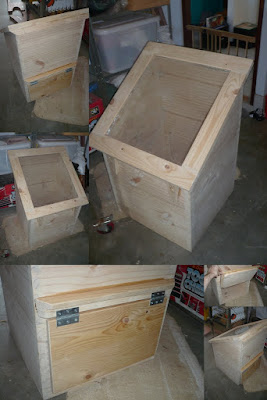Today I got cracking on the lid for the wax melter. The lid is made from a solid pine border (formed by laminated 19mm pine) and two sheets of glass 3 x 480 x 520 mm. The glass was sourced from '
A Touch of Glass' and cost $38.
 |
(You know you haven't had enough shed time
when the spiders have laid claim to your vices.) |
The frame is made using hand cut bridle joinery. Although this style of joint is not strong mechanically (like a dovetail) it has great strength to its large surface glue area and maintenance of long grain strength. The joinery was a little rough, but this is an industrial project and not a cabinet for show.
The plow plane made quick work of the twin inner rabbets. These are then lined with foil to aid in reflection and filled with silicone prior to assembly. After 3 trial dry fits I knew the joints were sound so I was happy to glue and use light clamping to pull it together.
I have to say, I was a little nervous with this glue up. Floating foil liners. Wet silicone in all the rabbets. Two sheets of thin glass.... But everything went smoothly. All about prior preparation.
The next step cleaning the joint overhang and attaching the hinges. I have some medium size gate T hinges ready for the job. I've attached small pieces of wood to move the frame forward a little to line up the glass and allow for the over hang.

































.png)